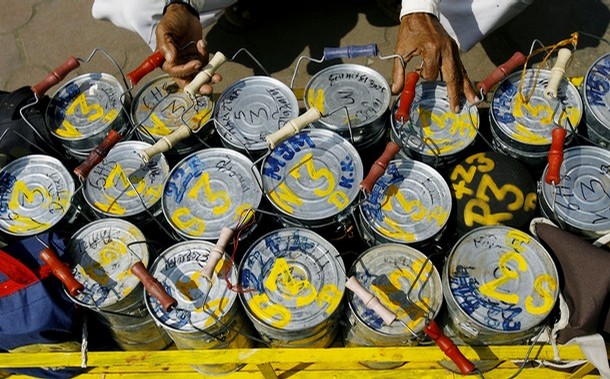
Next time you stand in front of the refrigerated fixture at Pret a Manger pondering the choice of Ham & Gruyere or Line Caught Tuna baguettes, feel a little envious for those who, in Mumbai, get to consume home made food each lunch time. Their food is cooked at home and leaves after the office workers have departed for the day but each container – or tiffin – finds its way to the right location by lunch time each day – and in the evening, in an act of reverse logistics, the tiffins are returned home.
All this happens with a reported delivery accuracy rate of 99.9999%. Forbes magazine awarded the service six sigma certification and many cite this as a piece of service design excellence. I’m sure it’s been done but it strikes me that those seeing to understand how technology, sensors and data can be used to make the city ‘Smart’ could do worse than understanding how the smartness of this system was designed and is maintained, even as it scales (growth rates are currently 10-15% per annum).
If you’re interested in learning more you might like Feeding the City: Work and Food Culture of the Mumbai Dabbawalas by Sara Roncaglia which has recently republished in English (eBook and Pdf are free). It’s an ethnographic study of this awe-inspiring food delivery system.
“Every day in Mumbai 5,000 dabbawalas distribute a staggering 200,000 home-cooked lunchboxes to the city’s workers and students. This co-operative, which employs thousands of largely illiterate villagers from Mumbai’s hinterland, provides one of the most efficient delivery networks in the world: only one lunch in six million goes astray.
In this ethnographic study of the inner workings of Mumbai’s dabbawalas, cultural anthropologist Sara Roncaglia explains how they cater to the various dietary requirements of a diverse and increasingly global city, where the preparation and consumption of food is pervaded with religious and cultural significance. Developing the idea of “gastrosemantics” – a language with which to discuss the broader implications of cooking and eating – Roncaglia’s study helps us to rethink our relationship to food at a local and global level.”
Here’s a little video of the service which explains how it work a little more visually:
